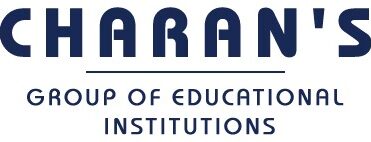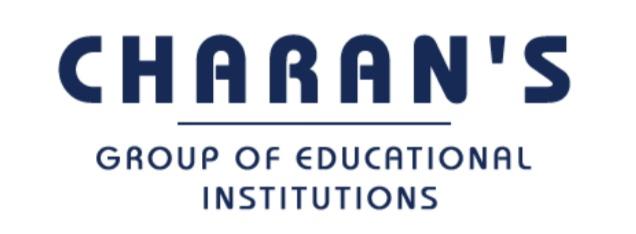Using Class Goals to Support Classroom Management
March 16, 2024 2024-03-16 5:57Using Class Goals to Support Classroom Management

Using Class Goals to Support Classroom Management
Consistently revisiting classroom goals and expectations throughout the year establishes a climate for success.
Effective classroom management structures are vital for student learning. They typically involve routines, procedures, and expectations established early in the year. But as time progresses, we may benefit from a reset. Though it’s tempting to push through minor misbehaviors and forge ahead with academics, reminding everyone of expectations can support students’ sense of safety and engagement.
One method I’ve found helpful is class goals. Developing and implementing class goals facilitates a fresh start, refocusing everyone on shared intentions.
ESTABLISHING CLASS GOALS
To identify three to five goals, I reflect individually on the current school year using prompts such as these:
- What is going well? (what I want to continue doing)
- What could be improved? (routines and structures I want to keep but may need to revise and/or reteach)
- What is missing? (new ideas or structures to try out)
My responses offer a starting point for identifying relevant goals. I recommend sharing highlights from your reflection with your class, then facilitating student reflection.
SYNTHESIZING STUDENTS’ REFLECTIONS
I ask students for additional input through discussions and/or written responses to these prompts:
- What do you like about our class?
- What do you wish were different about our class?
- What do you think our classroom should look like/sound like?
- How do you know if students are learning in our class?
I synthesize responses using an anchor chart, word map, or initial list of ideas or highlights. Then, I work with students to select three to five goals. It’s essential that these goals align with teacher and student reflections, while reinforcing established expectations. Selected goals should also encompass the ideal “classroom culture” that you have discussed.
When finalizing class goals, I recommend ensuring that the goals are concise and include student-friendly language, are agreed upon by teacher and students, are visible and accessible for quick reference, and are aligned with current classroom expectations.
ENACTING SHARED GOALS
While class goals may use wording similar to classroom rules or expectations, the main distinction is that the goals are reviewed consistently, through frequent reflection paired with tracking or monitoring—which, I’ve noticed, helped the goals become more pertinent to my students.
Considering shared goals became a part of our daily routine, and students began to hold each other more accountable, since they were working toward them as a class. My students and I set goals like these: Have a good voice level; follow directions the first time; be respectful and kind to classmates and teachers; stay on-task, do your best, and do your work.
After selecting our goals, we talked about what they would look like in action. For example, “Have a good voice level” meant aligning voice level to the task at hand. In context, independent work typically requires a different voice level than collaborative activities or projects.
Following directions aligns with being an active listener as well as maintaining student safety, minimizing off-task behavior, and maximizing productivity. Being respectful means staying mindful of our language, how we treat others when working together, and how we listen when others are sharing. And staying on-task and completing work relate to building positive work habits and being an active participant in the learning process.
We discussed how these goals relate to our school’s overarching goals (e.g., be respectful, be responsible, be safe) and how they contribute to our learning community.
TRACKING PROGRESS
After setting goals, we developed a system for reviewing progress. In my class, we designate specific times for check-ins by subject or on a daily or weekly basis.
I recommend connecting class goals with something tangible or relevant to students, such as working toward a larger class goal or reward, which increases buy-in. Because I wanted to establish a consistent review of class goals, we posted the goals next to our daily affirmation station so they were clearly visible. Prior to my starting instruction, students recited the mantras and class goals at our affirmation station during morning meetings.
I sometimes prompt students to individually select a class goal to focus on for the day. I also instituted a subject-specific goal check-in three times per day, at the end of our math, English language arts, and science/social studies blocks.
These check-ins were brief (one to two minutes). Students looked at the class goals and determined, through reflection, teacher feedback, and group consensus, whether we met the expectations for each goal during the specified instructional time.
I added three checkboxes beneath each goal so the class could receive one check mark per goal, per subject area, if they met the expectations. If students did not meet the expectations for a specific goal, we circled the box for that goal and discussed how we could refocus for the next instructional block.
This check-in gave students opportunities to reflect, acknowledge what went well and what needed improvement, and set manageable time frames throughout the day to focus on expectations.
CONSISTENCY IS KEY
Consistently referring to class goals is an important part of the process. I found that if individual students or the class needed a simple redirection, I could refer back to the class goal chart or prompt them by asking, “What class goal are we not meeting right now?” and “How can we fix it?” Students were quick to reflect, respond, and redirect behavior with minimal intervention.
I’ve found that class goals are most effective when teachers use them within an existing classroom management structure. Consider what strategies you already have in place that work well, and envision how class goals can support and supplement them. You might connect class goals to an overarching class objective or reward, align them with individual student recognition, and/or reinforce specific behavior management strategies.
By collaborating with students to generate class goals and establish a system to reflect on and measure them, you can leverage class goals to support the creation of an ideal culture and community of learners.
Related Posts
Promised Academic Excellence
Most students pleased with their digital learning
Gender inequality in higher education persists
Search
Categories








